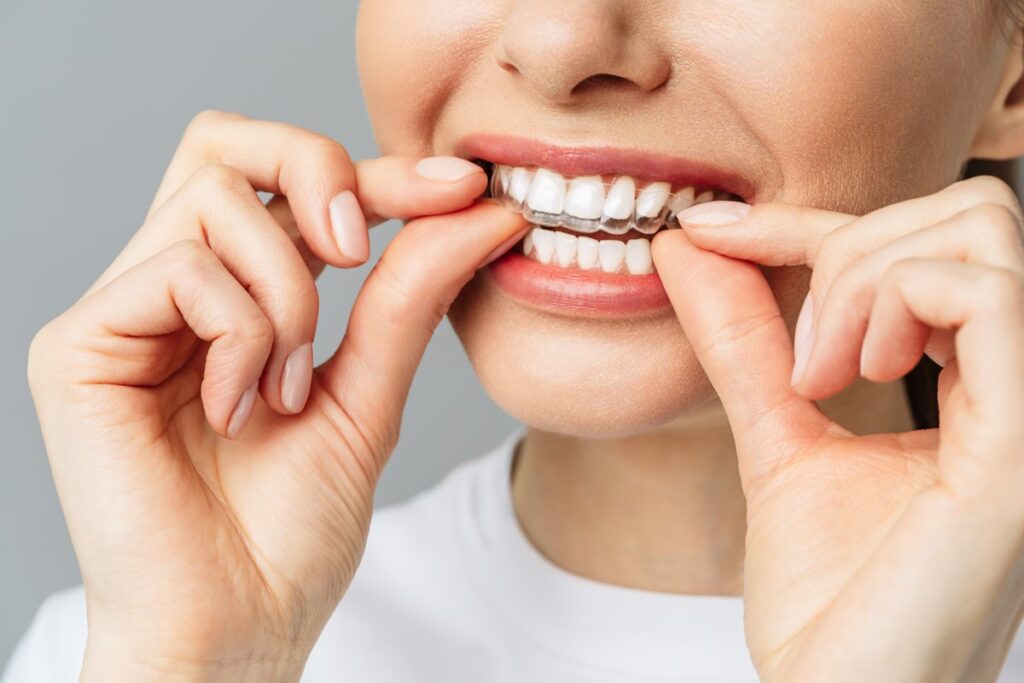A beautiful smile is something that everyone desires. Straight and properly aligned teeth not only enhance your appearance but also contribute to overall dental health. If you’re considering teeth straightening options, you’ve likely come across two popular choices: Invisalign and braces. While both options are effective, they differ in terms of aesthetics, comfort, and maintenance. In this blog, we will explore the pros and cons of Invisalign and braces, helping you make an informed decision about which option suits you best.
- The Aesthetics:
One of the primary concerns when it comes to teeth straightening is the impact on your appearance. Traditional braces consist of metal brackets and wires, which can be noticeable and may affect your self-confidence, especially in social situations. On the other hand, Invisalign offers a more discreet alternative. Invisalign aligners are virtually invisible and made from transparent plastic, allowing you to straighten your teeth without drawing attention.
- Comfort and Convenience:
Comfort is another important factor to consider when choosing between Invisalign and braces. Traditional braces can cause discomfort and irritation due to the metal brackets and wires rubbing against your gums and cheeks. Invisalign aligners are custom-made and smooth, providing a more comfortable experience without the risk of mouth sores or injuries. Additionally, Invisalign aligners are removable, allowing you to enjoy your favorite foods without restrictions, and making oral hygiene routines much easier.
- Treatment Duration and Complexity:
The length of your teeth straightening journey may influence your decision. In general, braces are often recommended for more complex cases that require significant teeth realignment. The treatment duration can range from several months to a few years, depending on the severity of your misalignment. Invisalign, on the other hand, is ideal for milder to moderate cases and generally offers a shorter treatment duration. However, the exact duration will depend on your specific situation, and it’s best to consult with an orthodontist to determine the most suitable option for your needs.
- Maintenance and Follow-up Visits:
Maintaining good oral hygiene is crucial during any teeth straightening treatment. With braces, cleaning your teeth becomes slightly more challenging due to the presence of brackets and wires. You may need additional tools like floss threaders or interdental brushes to ensure effective cleaning. In contrast, Invisalign aligners are easily removable, allowing you to brush and floss your teeth as you normally would. However, it’s important to note that you need to wear your Invisalign aligners for a minimum of 20-22 hours per day for optimal results.
- Cost Considerations:
Cost is an important aspect to evaluate when deciding between Invisalign and braces. Traditional braces are generally more affordable compared to Invisalign. The exact cost will vary depending on factors such as the complexity of your case, the location of your orthodontic clinic, and any additional treatments required. Invisalign aligners tend to be more expensive due to their advanced technology and customization. However, it’s worth noting that some dental insurance plans may cover a portion of the treatment cost for both options.
Choosing between Invisalign and braces ultimately depends on your personal preferences, budget, and dental needs. While braces have a long-standing reputation and can address more complex cases, Invisalign provides a more discreet and comfortable option for milder to moderate misalignments. Consult with an experienced orthodontist who can evaluate your dental condition and recommend the most suitable option for achieving the smile you desire. Remember, regardless of the choice you make, the end goal remains the same: a beautiful, confident smile that lasts a lifetime.



